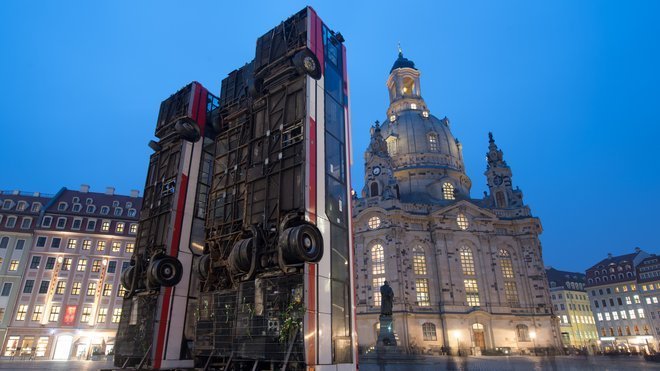Seeking compassion in a city struggling with its own identity
One of the most enduring images of the conflict in Aleppo is a photograph of three buses lifted upright to stop government snipers firing on civilians across the frontline. The picture, taken in 2015, shows the barricade that cut a road once connecting two central neighborhoods.
It was the ultimate symbol of closure. What used to connect people — buses that once took Aleppians from their homes to their jobs — was turned into a towering wall to hold apart two sides committed to nothing less than the extinction of the other. The wall of buses was a haunting image of civil war and the terrible price civilians have paid.
For Manaf Halbouni, a German-Syrian artist, the buses represented the desire for dignity, understanding and community that Syrians sought. To remind people of the need for tolerance and discussion, he installed a replica of the barricade in Dresden’s most hallowed public space, the Neumarkt. Aleppo and Dresden, two cities that have become by-words for destruction and the terrible price of war, are now linked by a challenging and thought-provoking work of art.
To those unaware of Dresden’s deeply conflicted identity, it may be surprising that the installation, which Halbouni called Monument, has sparked large-scale protests and opposition. To understand this ‘Dresden state of mind’ one needs to look at the city’s history of reconstruction and memory, tainted by totalitarian exploitation throughout the period of communism and then historical neglect after the fall of the Berlin Wall. The seemingly ignorant opposition to the installation is deeply rooted in the lack of dialogue and understanding about what Dresden is and what it should be.
To download the full report, please click here.
 The Aleppo Project
The Aleppo Project
Join the conversation
You must be logged in to post a comment.